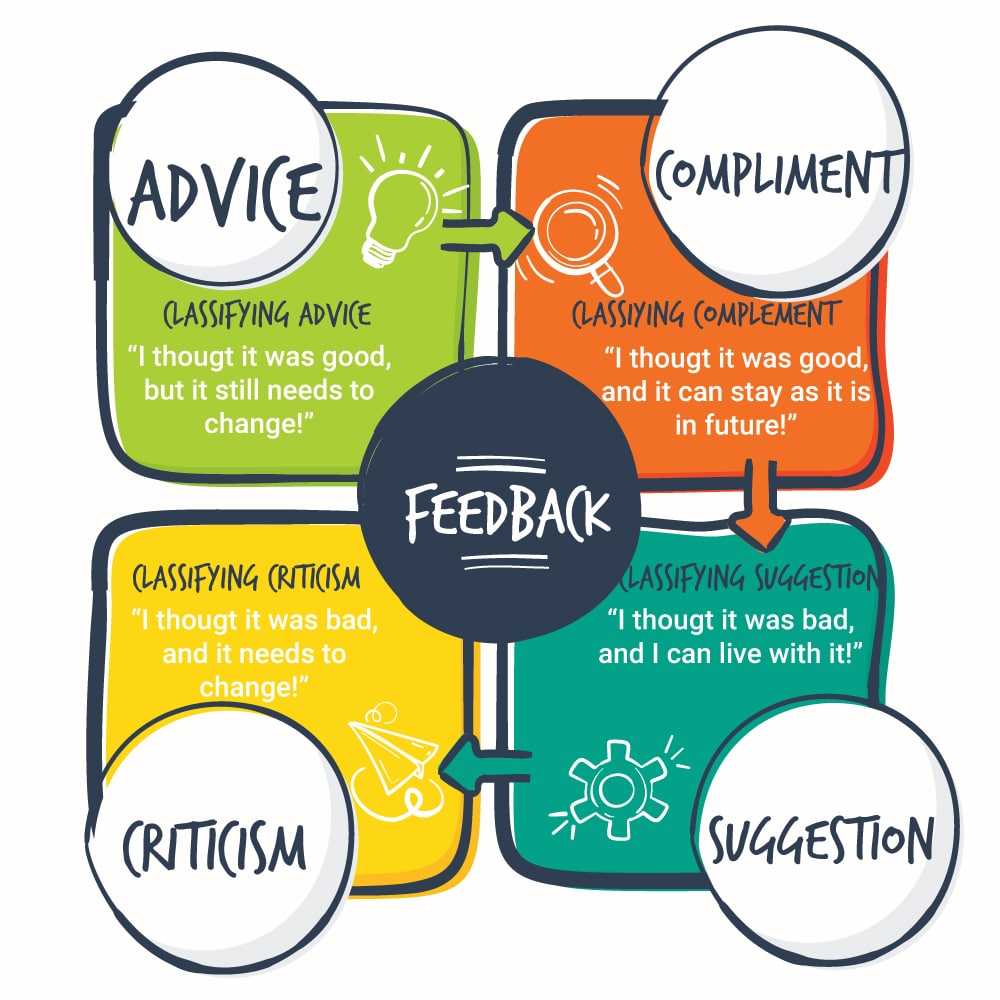How to Receive Feedback – Deal with People’s Complement and Criticism
In a professional setup, you must have heard so many times that you need feedback to improve yourself, your action, or your work that you now see it as a cliched argument.
Feedback indeed is one of the most difficult and delicate processes, especially if a group is involved. But does it really work the way we have been hearing for so long?
The answer is ‘Yes’ it does, but the individual, group, or even organization needs to classify the feedback and then qualify them to make it useful.
Not every feedback is the same, so you need to learn the ‘Art of receiving feedback‘ to make full use of it. For those wanting to hone their skills in giving feedback. The art of giving feedback is the section you should read.
It is easy to hurt people with criticism, but false compliments are sometimes more harmful. Compliments often make people complacent, while criticism damages our self-esteem and can lead us to make unwise choices. The feedback is what helps us improve.
Contents
How to receive feedback that works for you?
The one-dimensional question ‘What did you find good, what did you find bad?’ is therefore not necessarily helpful. In terms of what can be learned from feedback, it is better to ask yourself ‘What can I do with this criticism?’ In other words, see what can stay as it is, and what needs to change(but may have been good up till now).
It is not only about establishing what has not succeeded, but it is also about deciding whether and how to react. The model will help you to categorize the feedback you receive in order to clearly establish a plan of action.
It is also important to ask yourself honestly: ‘Which success or failure was in fact due to luck?’ Were you the winner of a match because the ball found its way into the net purely by chance? Do you really deserve this compliment?
- Pay attention to your thoughts, because they become words.
- Pay attention to your words, because they become actions.
- Pay attention to your actions, because they become habits.
- Pay attention to your habits, because they become your character. Pay attention to your character, because it is your fate.
The Feedback Matrix

To interpret the feedback you need to categorize them into a 4*4 matrix called the Feedback matrix. The feedback matrix is based on the following elements
1. Advice
Inputs where the person giving feedback believes “I thought it was bad, and it needs to change.
You need to tread carefully with advice while receiving feedback. Advice is quite susceptible to personal bias. It has to be analyzed objectively to implement, the analysis needs to focus on why the person believes that it was good.
If the underlying argument behind the reason that the demonstrated behavior was bad is objective and free of any biases or prejudice this should be implemented immediately. However, you must first try to find out the objectivity of the argument by asking relevant questions.
2. Complement
Comments are easier to interpret and implement. Most often compliments are given when the person believes the demonstrated behavior was good and it can stay as it is in the future.
It is only the second part that you should not completely follow. The underlying idea that it can remain as it is in the future, leads to complacency. You should take compliments positively but keep on improving.
3. Criticism
Criticism is when the person giving feedback believes it is bad and it needs to change. Mostly the criticism is followed by specific inputs as to why it was bad. That makes it quite useful in self-improvement initiatives.
Most people encourage criticism to make amends for the future. But do remember that criticism is a very objective exercise and you should always welcome criticism backed by objectivity and make necessary changes.
4. Suggestion
A suggestion is quite similar to advise in a way that this is also quite susceptible to personal prejudices and bias. A suggestion is when the person giving feedback believes that it was bad but I can live with it.
Similar to advise, you need to find out the objectivity of why the person believes it was bad and you can make changes based on how objective the observation is. Furthermore, if the suggestion seems devoid of objectivity you can ignore it for good.
Conclusion
We receive a lot of feedback and inputs in our personal and professional life, and the knowledge about how to receive feedback and interpret and implement it to improve ourselves is an art. The feedback matrix helps us categorize all these inputs and take action for further improvements.

